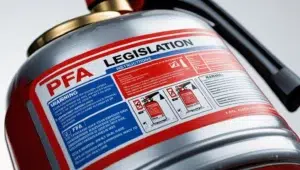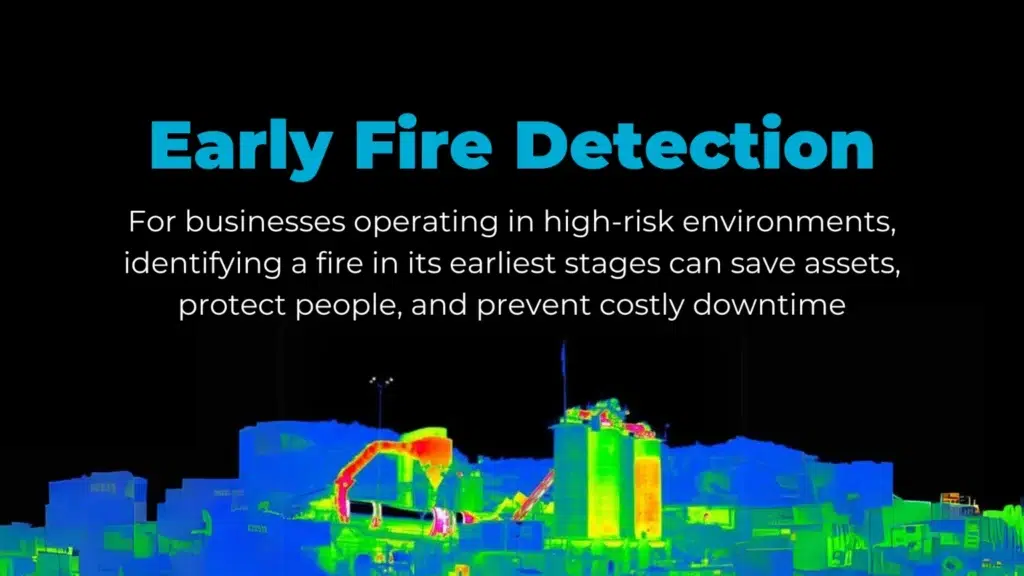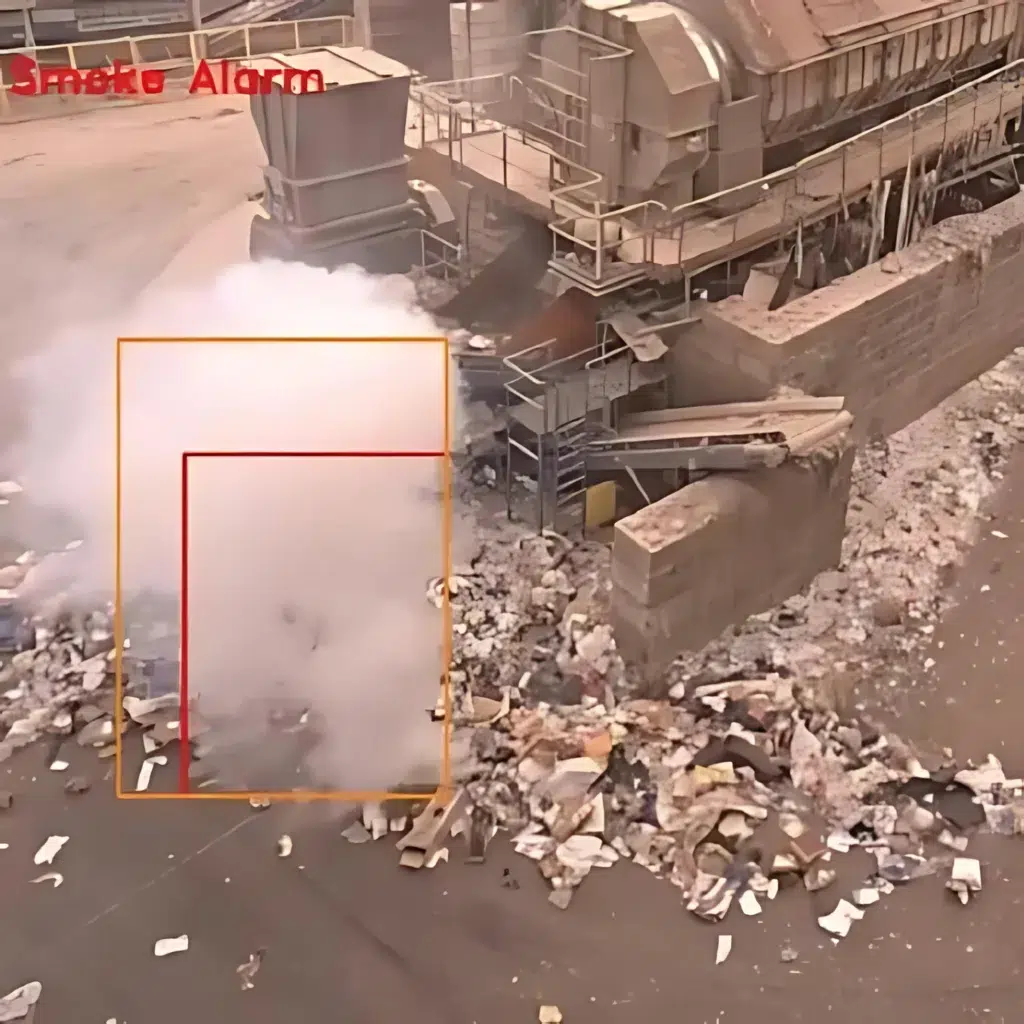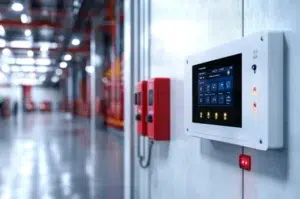
PFA Legislation – Foam fire extinguishers
Only foam extinguishers containing PFOA are banned. Many foam extinguishers manufactured post2016 are already PFOA-free, or contain alternative PFAS like C6, which are still legal.
Book your FREE, no-strings-attached Fire Safety Audit to ensure that you’re properly protected from the risk and comply with current fire safety legislation.
Get essential insights and updates
in fire safety – straight to your inbox!
Early fire detection can make the difference between a minor incident and a full-blown disaster. For businesses operating in high-risk environments, identifying a fire in its earliest stages can save assets, protect people, and prevent costly downtime. But what exactly is early fire detection, and how can it be a game-changer for your business? Let’s dive into why early detection is critical and what it looks like in a real-world scenario.

Fire detection involves identifying the byproducts of fire—such as heat, smoke, infrared radiation, or visible flames—as early as possible in an area at risk. The goal is to detect these signs before the fire escalates into something unmanageable. In industries like waste management, where carbon-based materials are predominant, early detection helps identify fire risks before they get out of control.
The importance of detection is simple: it’s the trigger for every other fire response action. Detection is what activates fire suppression systems and alerts people to a fire hazard. Without detection, there’s no way to react. And when it comes to fires, the old saying “what you don’t know can’t hurt you” doesn’t apply—what you don’t know could cost you your business.
A key point to understand is that an ineffective detection system can be worse than having no system at all. Why? Because it creates a false sense of security. Also, many facilities turn off their unsuitable fire detection systems because they generated so many false alarms that they became a nuisance, ultimately leaving the facility vulnerable.

Every fire starts small. Whether it’s a smouldering pile of waste or a spark from machinery, it’s always manageable in its initial stages. If caught early, breaking the fire triangle (heat, fuel, oxygen) is simple and straightforward, often done with something as basic as a portable fire extinguisher.
According to a 2021 study by the FIA, 93% of fires were dealt with using handheld fire extinguishers. These fires were prevented from becoming major incidents simply because they were identified early. The same principle applies to larger fire detection systems—detect the fire early, and you have a much better chance of putting it out quickly and efficiently, before it causes significant damage.
Real-Life Example: One of our clients recently installed a flame detection system in their recycling facility. The system detected a small fire that, if left unnoticed, could have escalated into a major blaze. This instance perfectly illustrates the value of early detection—it identified a fire before it had a chance to grow into something destructive, saving the facility from significant damage.
The Cost of Missing Early Detection: Fires that go undetected can lead to catastrophic losses. This includes the complete loss of buildings or assets, potential injuries, and in the worst cases, even fatalities. The earlier you detect a fire, the easier it is to control, and the less impact it will have on your business.
The best approach to fire detection often involves a combination of different systems. No single technology is perfect—each has its strengths and weaknesses. For example:
Combining multiple systems means that you can cover different fire indicators, ensuring a more comprehensive approach to detection. However, there’s a downside—false alarms. Each system has the potential for false alarms and combining them can lead to a flood of false alerts, especially in complex environments like waste management facilities.
The Fire Rover Difference: This is where the Fire Rover System shines. Fire Rover combines multiple detection methods but uses an offsite monitoring center with human operators to filter out false alarms before they reach the site. This means you get extremely early detection without the hassle of constant false alerts—a key differentiator from other systems on the market.
Early fire detection is crucial for preventing small fires from escalating into major incidents. It’s about catching a fire early, reacting quickly, and keeping damage to a minimum. Whether it’s through thermal detection, smoke detection, or flame detection, the goal is always the same—identify the fire before it grows out of control.
For many facilities, combining multiple detection systems provides the best coverage, but this can also lead to a flood of false alarms. That’s why solutions like Fire Rover—which combines the best of technology with human oversight—offer a unique advantage: early detection with zero false alarms. It’s the kind of system that can make a real difference, keeping your business safe and secure.

Only foam extinguishers containing PFOA are banned. Many foam extinguishers manufactured post2016 are already PFOA-free, or contain alternative PFAS like C6, which are still legal.

Fire alarm monitoring in the UK is facing major changes due to the phase-out of traditional communication networks and providers. Analogue phone lines (PSTN) are being switched off by December

In industrial environments, safety is more than a priority—it’s a responsibility. Yet, one of the most dangerous threats to worker health is often invisible, odorless, and too often overlooked: carbon
Video Smoke Detection is perfect for a fast response to fires in high roofed buildings and harsh operating conditions.
Watch Smokecatcher detect smoke in an MSW storage building. The smoke is coming through from a fire in the adjoining storage area.
Watch Smokecatcher detect a fire in an SRF Storage bunker. Sadly, the alarm wasn’t responded to and the site lost a 4hr window of opportunity between smoke detection and flames appearing.
Video Smoke Detection overcomes the risks of stratification and other challenges for early fire detection in logistics and storage facilities.
Watch Fire Rover detect and suppress a fire in the waste bunker at an EFW facility!
See how the Fire Rover detects and suppresses this fire at a clients tipping hall. Note how the smok is spreading out at low leve, rather than rising. This is called ‘stratification’ and is one of the many reasons why roof-mounted smoke detection systems like beam detectors and HSSD is not suitable for many recycling applications.
Watch the Fire Rover detect and suppress a fire at a battery storage facility. This targeted and intellegent control makes the Fire Rover particularly well suited to high hazard storage applications.
Watch the Fire Rover tackle a battery fire in a tipping hall. Note how the exploding battery cells start three separate fires, which the operator individually suppresses (whilst avoiding the site operators in the vicinity).
Get essential insights and updates in fire safety – straight to your inbox!